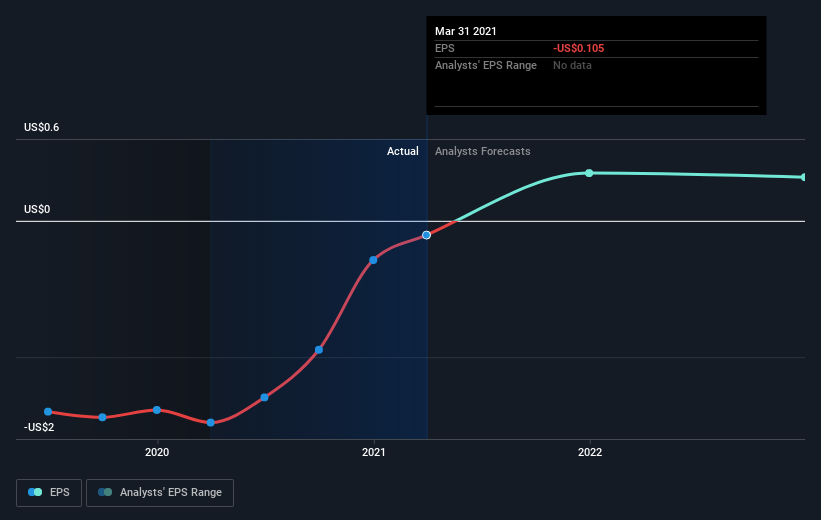Trinity Biotech plc (NASDAQ:TRIB) Is About To Turn The Corner
With the business potentially at an important milestone, we thought we'd take a closer look at Trinity Biotech plc's (NASDAQ:TRIB) future prospects. Trinity Biotech plc acquires, develops, manufactures, and markets medical diagnostic products for the clinical laboratory and point-of-care (POC) segments of the diagnostic market in the United States, Africa, Asia, and Europe. With the latest financial year loss of US$6.0m and a trailing-twelve-month loss of US$2.2m, the US$50m market-cap company alleviated its loss by moving closer towards its target of breakeven. Many investors are wondering about the rate at which Trinity Biotech will turn a profit, with the big question being “when will the company breakeven?” In this article, we will touch on the expectations for the company's growth and when analysts expect it to become profitable.
View our latest analysis for Trinity Biotech
Trinity Biotech is bordering on breakeven, according to some American Medical Equipment analysts. They expect the company to post a final loss in 2020, before turning a profit of US$9.4m in 2021. The company is therefore projected to breakeven around 12 months from now or less. How fast will the company have to grow to reach the consensus forecasts that anticipate breakeven by 2021? Working backwards from analyst estimates, it turns out that they expect the company to grow 85% year-on-year, on average, which signals high confidence from analysts. If this rate turns out to be too aggressive, the company may become profitable much later than analysts predict.
Underlying developments driving Trinity Biotech's growth isn’t the focus of this broad overview, however, bear in mind that generally a high growth rate is not out of the ordinary, particularly when a company is in a period of investment.
One thing we would like to bring into light with Trinity Biotech is it currently has negative equity on its balance sheet. Accounting methods used to deal with losses accumulated over time can cause this to occur. This is because liabilities are carried forward into the future until it cancels. Oftentimes, losses exist only on paper but other times, it can be a red flag.
Next Steps:
This article is not intended to be a comprehensive analysis on Trinity Biotech, so if you are interested in understanding the company at a deeper level, take a look at Trinity Biotech's company page on Simply Wall St. We've also put together a list of relevant aspects you should look at:
Valuation: What is Trinity Biotech worth today? Has the future growth potential already been factored into the price? The intrinsic value infographic in our free research report helps visualize whether Trinity Biotech is currently mispriced by the market.
Management Team: An experienced management team on the helm increases our confidence in the business – take a look at who sits on Trinity Biotech’s board and the CEO’s background.
Other High-Performing Stocks: Are there other stocks that provide better prospects with proven track records? Explore our free list of these great stocks here.
This article by Simply Wall St is general in nature. We provide commentary based on historical data and analyst forecasts only using an unbiased methodology and our articles are not intended to be financial advice. It does not constitute a recommendation to buy or sell any stock, and does not take account of your objectives, or your financial situation. We aim to bring you long-term focused analysis driven by fundamental data. Note that our analysis may not factor in the latest price-sensitive company announcements or qualitative material. Simply Wall St has no position in any stocks mentioned.
Have feedback on this article? Concerned about the content? Get in touch with us directly. Alternatively, email editorial-team (at) simplywallst.com.

 Yahoo Finance
Yahoo Finance 
